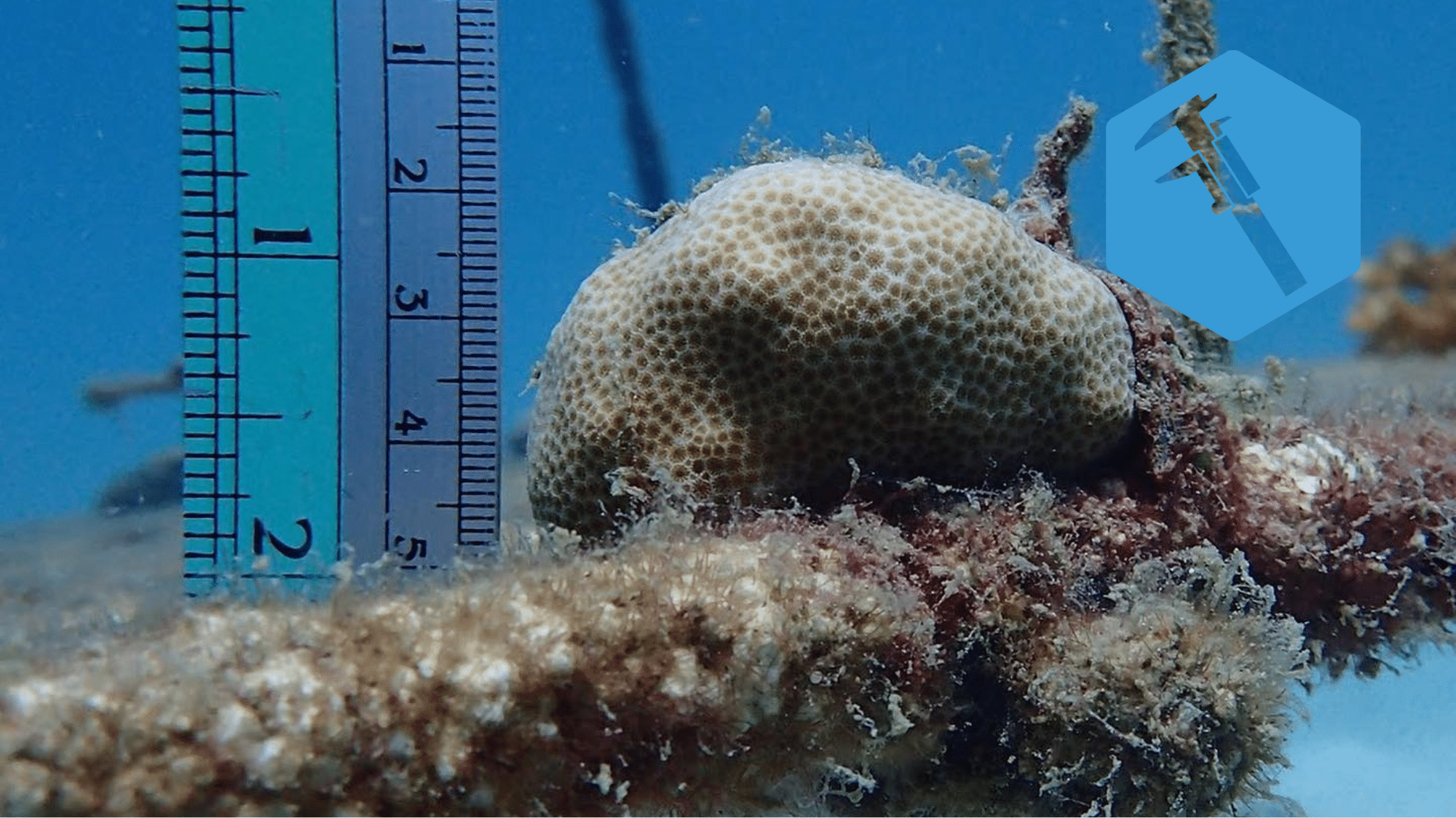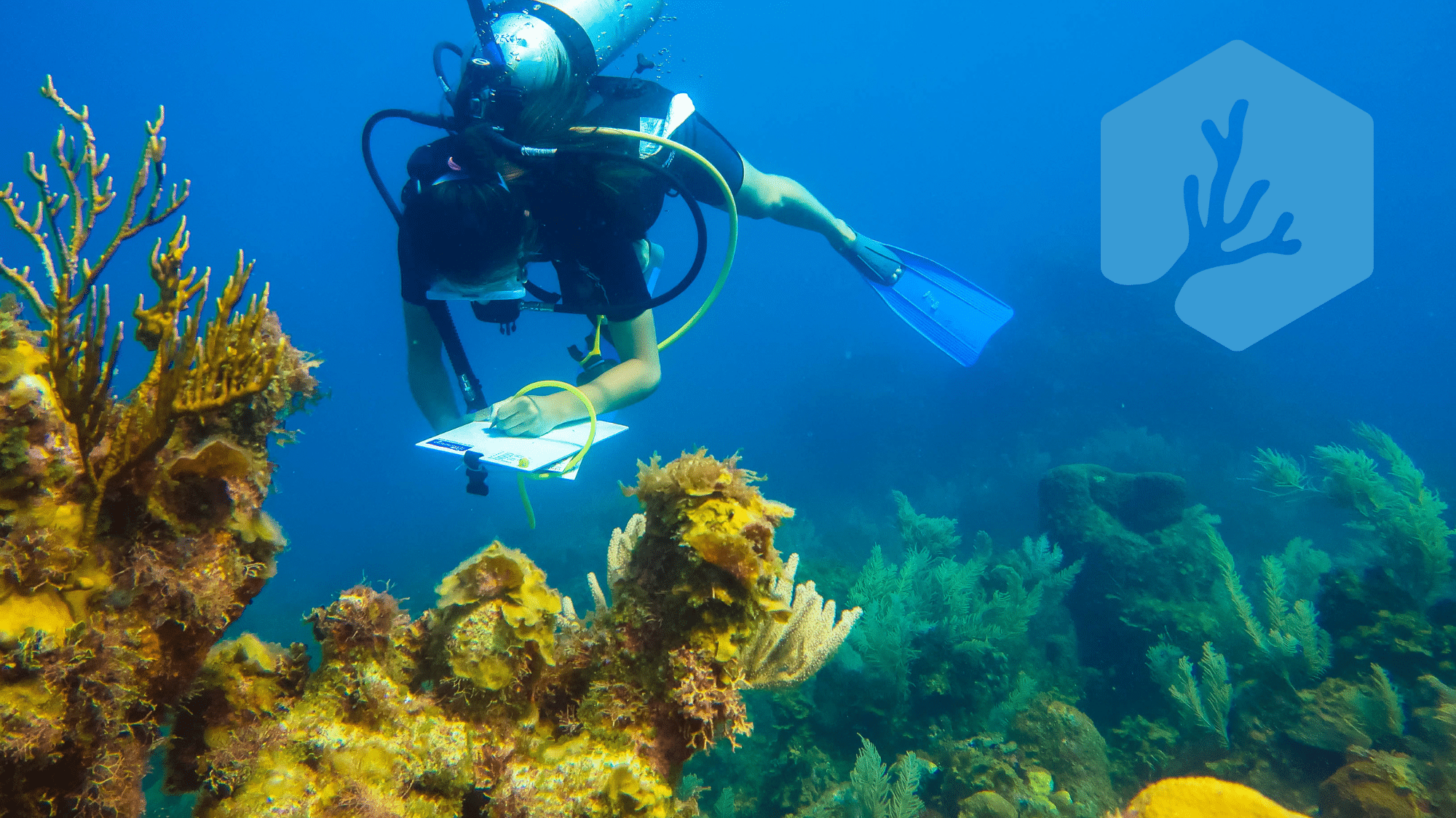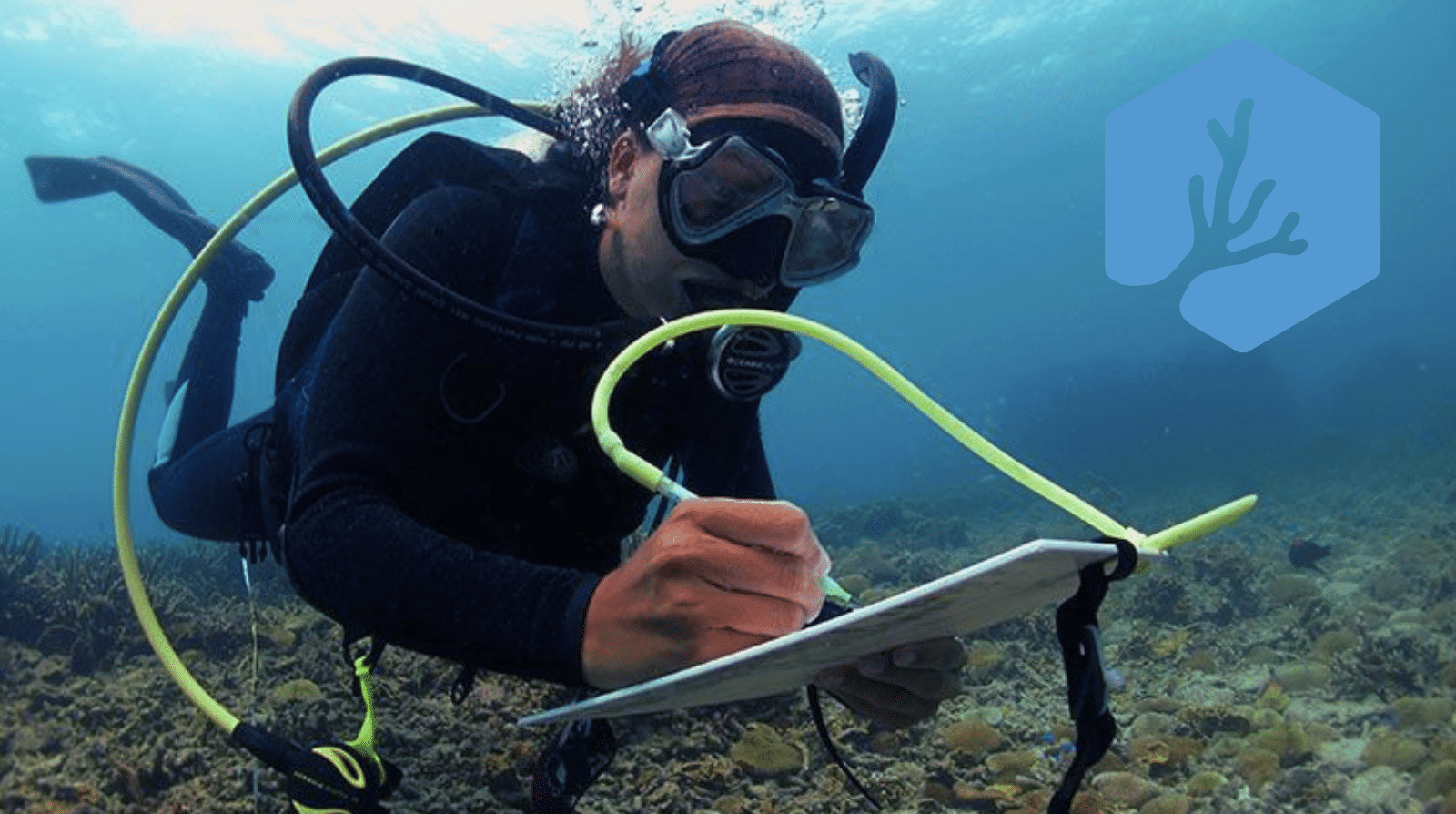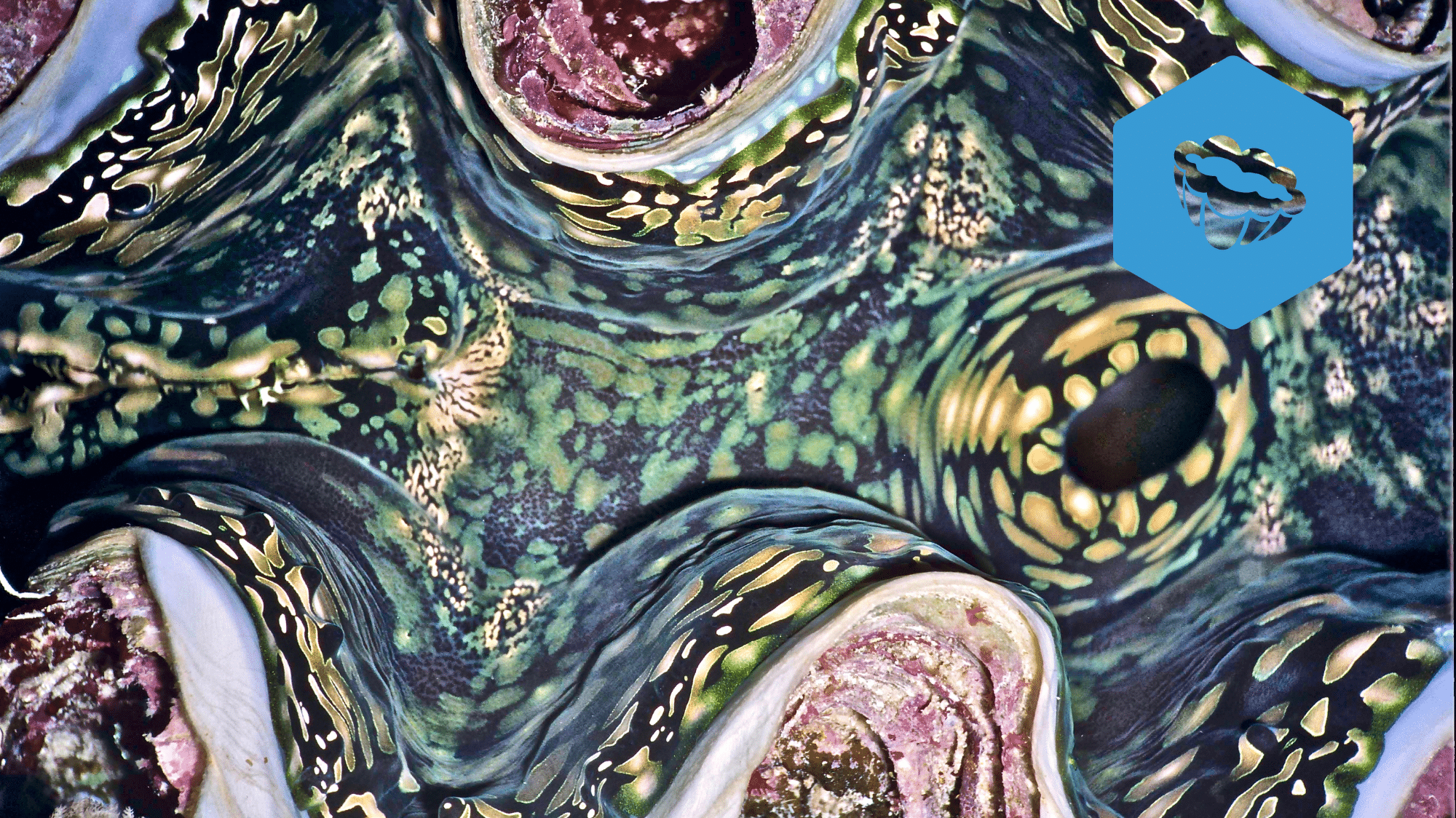Conservation Diver returns to the Philippines, April 2017
Conservation Divers Rahul Mehrotra and Spencer Arnold returned to the Philippines in 2017 to continue the research and ecological consultancy work from the initial assessment in 2016.
The small and rural municipality of Toboso has historically been a fishing and agriculture driven community for many decades. Recent years have shown heavy declines in fish stocks. As part of broader national incentives and to assess the coastal ecosystem and fishery health, the local NGO, Worldreef Toboso, has been working with the local government to create an MPA and zonation plan for the area.
[su_slider source="media: 400,399,398,397,396,395,394,393" width="260" height="260" speed="1300"]
Conservation Diver was invited to carry out the local assessment and research to promote the local conservation efforts. The 2016 assessment found that though the coral reefs, mangroves and seagrass habitats appeared healthy and abundant in places, the vast majority of fish diversity and adult fish abundance, was absent. Additionally it was found that the presently proposed MPA failed to protect most of the healthy and diverse reef ecosystems, and instead covered sparse and degraded habitats. The full 2016 report can be downloaded here.
This year, Conservation Diver Trainers returned to the area to provide scientific evidence for the proposed extended MPA area, while also conducting further assessments of the local fishery. The 2017 Toboso project concluded with more data collection from both the original and the newly proposed MPA locations yielding some fascinating findings. Additionally, deeper EMP transects were carried out throughout the coastline. These deeper surveys showed that what was left of the adult/larger individuals of the key ecological fish species were to be found at the deeper extent of high-abundance coral reefs. Presumably, the challenges to fisherfolk kept these deeper areas as effective refuges.
A greater focus was applied also to the algal diversity at Toboso in the second week. Though the data analysis for the findings is still very much in its early stages, it is believed that this years work is likely to have added a further 100 or so species to the 400 established thus far. Finally, the trip concluded with a meeting with the Mayor and a number of the governing staff of the nearby municipality of Escalante, with potentially exciting developments for a 2018 expedition.
The next several weeks will be spent analysing the mountain of data collected during the expedition to produce a new, updated report to the highly successful report from 2016.
[su_slider source="media: 410,409,408,407,406,405,404,403,402,401" width="260" height="260" speed="1300"]
Advanced Ecological Monitoring Program
Advanced Ecological Monitoring Program

The Advanced Ecological Monitoring Program certification is a prestigious certification course for students seeking to gain knowledge and practice in a multitude of research techniques and demonstrate exceptional skill in performing reef surveys and data collection. This certification recognizes your commitment to coral reef monitoring and research and takes several weeks to achieve.

Prerequisites
- Be 12 years of age or older
- Be certified as an Advanced diver under a leading diving organization (PADI, SSI, RAID, etc) or an Open Water diver who has satisfactorily completed a buoyancy appraisal with a professional diver
- Demonstrate proper diving ability at an advanced Level and be proficient in buoyancy and self-awareness
- Complete our Ecological Monitoring Program (EMP) certification
- Complete our Coral Taxonomy & Identification certification
- Complete our Coral Diseases & Compromised Health Monitoring certification or a similarly advanced monitoring course
- Complete at least 3 of the following seven other research certifications
- Giant Clam Nurseries & Population Studies
- Seahorse Ecology & Monitoring
- Nudibranch Ecology & ID Course
- Coral Predators: Population Monitoring & Management
- Shark Ecology & Population Studies
- Sea Turtle Ecology & Monitoring
- Marine Plastic Pollution: Monitoring & Assessment
- Macro Algae Monitoring
- Seagrass Ecology & Monitoring
Standards
- Learn and practice a variety of marine research techniques, including but not limited to; water quality testing, fragment/recruitment surveys, coral size class surveys, reef surveys using a quadrant, photo documentation, underwater photogrammetry, tracking growth rates, monitoring coral health, and more
- Successfully conducted various survey techniques and data collection protocols
- Enter data into our existing databases and understand how that data in analyzed and reported
Requirements
- Attend all knowledge
development presentations included in the courses listed above as well as the
Advanced Ecological Monitoring Program lecture - Read and complete the chapter
reviews for chapters 9-10 of the Ecological Monitoring Program manual - Complete and pass all the
written exams for the courses listed above (80% and above) - Perform at least one
Compromised Coral Health survey or Coral Bleaching Survey
Certification Card
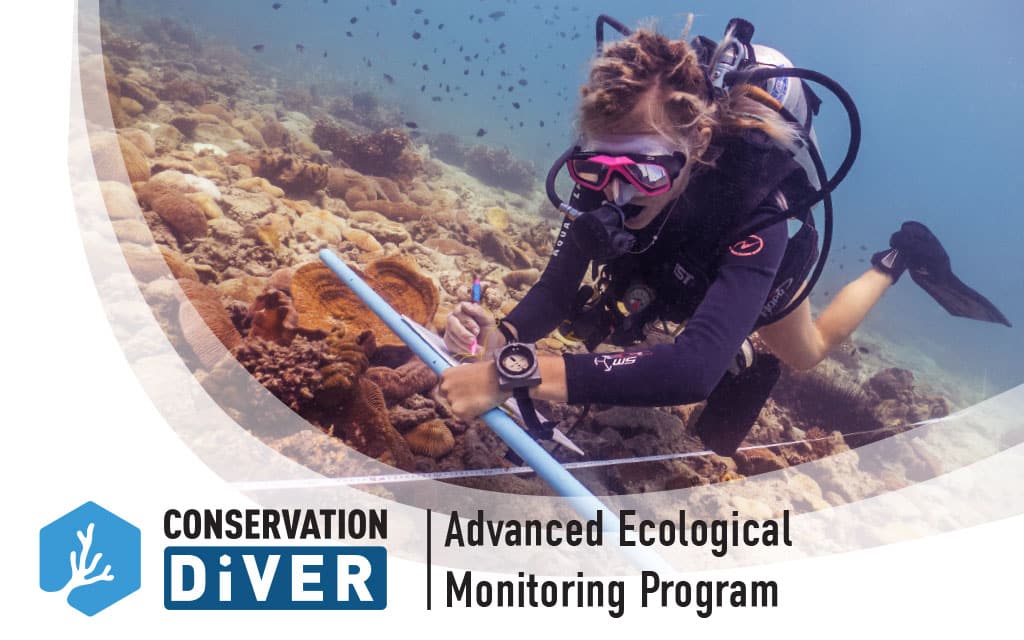
Training Centers
- Hawai'i - Ocean Alliance Project
- Indonesia - Blue Marlin Conservation
- Indonesia - Gili Eco Trust
- Thailand - Black Turtle Dive
- Thailand - NHRCP
Published papers and reports derived through the teaching of this course
- Recruitment of hard coral communities on giant clam shells (Cardiidae: Tridacna) differ from surrounding reef habitats at a tourist destination in the Gulf of Thailand
Rahul Mehrotra, Alyssa Allchurch, Coline Monchanin, Chad M Scott - Citizen science reveals the population structure and seasonal presence of whale sharks in the Gulf of Thailand
Kirsty Magson, Emily Monacella, Chad Scott, Noémie Buffat, Sirachai Arunrugstichai, Metavee Chuangcharoendee, Simon J Pierce, Jason Holmberg, Gonzalo Araujo - Population dynamics of corallivores (Drupella and Acanthaster) on coral reefs of Koh Tao, a diving destination in the Gulf of Thailand by Chad M. Scott, Rahul Mehrotra, Margaux Y. Hein, Michelangelo S. Moerland, and Bert W. Hoeksema
- Rare zooxanthellate Nanipora octocoral (Helioporacea) in the Gulf of Thailand by Pau Urgell Plaza, Rahul Mehrotra, Chad M. Scott and James Davis Reimer
- Changes in hard coral abundance and composition on Koh Tao, Thailand, 2006-2014 by Chad M. Scott, Rahul Mehrotra, Madalena Cabral and Sirachai Arunrugstichai
- An update to the list of coral reef fishes from Koh Tao, Gulf of Thailand by Patrick Scaps and Chad M. Scott
- Incident Report and Restoration Overview: Boat Grounding, Chalok Ban Kao Reef, January 2017 2015. by Chad Scott, Spencer Arnold, Elouise Haskin, Kirsty Magson, Rahul Mehrotra, Joel Rorher, Pau Urgell Plaza
Marine Ecology & Monitoring
Marine Ecology & Monitoring
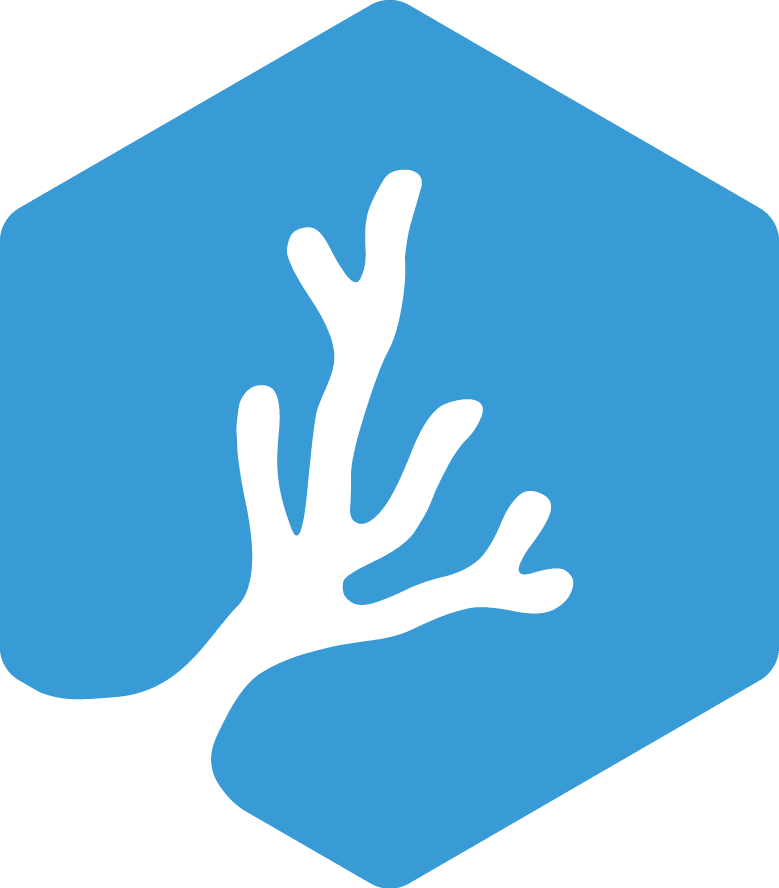
The Marine Ecology & Monitoring Course is a partial fulfilment of the full Ecological Monitoring Program (EMP), for students who do not have time to complete all 5 lectures and 4 dives of the EMP. It is designed to give students an introduction to marine ecology and how to view the reef scientifically by assessing key biotic and abiotic components on the marine environment. The course teaches students how to use real world scientific sampling and survey techniques and certifies them to conduct their own surveys and report data back to the online database. Students receiving this certification are welcome to return at a later date and complete the full EMP course.



Prerequisites
- Be 12 years of age or older
- Be certified as an Advanced diver under a leading diving organization (PADI, SSI, RAID, etc) or an Open Water diver who has satisfactorily completed a buoyancy appraisal with a professional diver
- Demonstrate proper diving ability at an advanced Level and be proficient in buoyancy and self-awareness
Standards
- Understand more about marine ecology and threats to coastal ecosystems.
- Understand various survey techniques used by reef and marine resources managers to monitor coastal ecosystems
- Learn the techniques and diagnostic features for identifying marine invertebrates along a permanent transect line
- Or the techniques and diagnostic features for identifying fishes and other vertebrates along a permanent transect line or
- Or how to assess substrate types and composition and, in locations where it applicable hard coral coverage/growth forms, using the point-intercept technique
Requirements
- Attend the Intro to Marine Ecology Lecture, plus at least one other survey lecture (Marine Invertebrates, Fish, or Substrate)
- Perform at least one of the three EMP surveys (marine invertebrates, fish, or substrate)
Expected course time: minimum 4 hours, minimum of 1 dive.
Certification Card
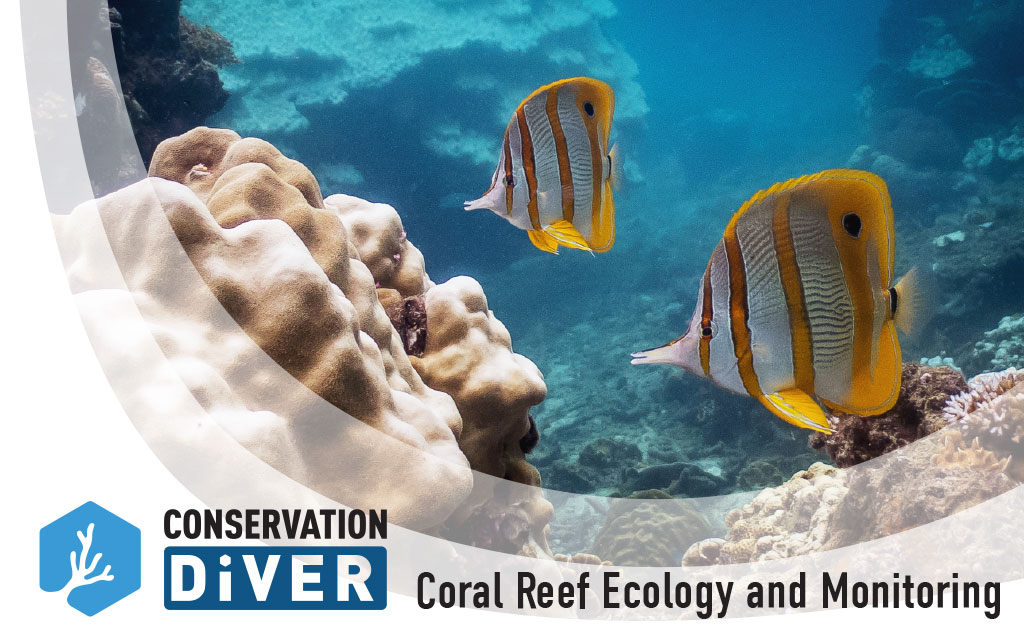
Training Centers
- Hawai'i - Ocean Alliance Project
- Madagascar - MRCI
- Mallorca - Albatros Diving
- Indonesia - Bali Conservation Diving
- Indonesia - Blue Marlin Conservation
- Indonesia - Gili Eco Trust
- Indonesia - Gili Shark Conservation
- Thailand - ATMEC
- Thailand - Black Turtle Conservation
- Thailand - NHRCP
- Thailand - The Adventure Club
Nudibranch & Sea Slug Ecology
Nudibranch & Sea Slug Ecology
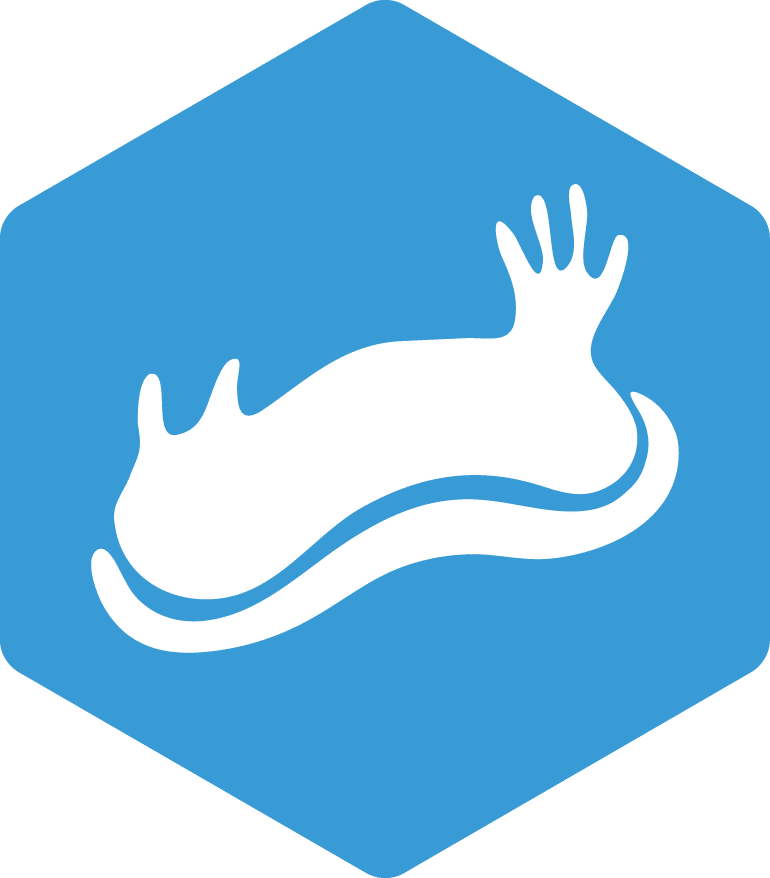
Nudibranchs, and other sea slugs, are a diverse and fascinating group of marine gastropods that have developed very colorful and ornate forms. Apart from being a favorite sighting by divers and photographers, their biodiversity is an indicator of total reef diversity, and also can be used when assessing changes in the physical or biological composition of marine areas in the face of disturbances. In our course you will learn about the ecology and taxonomy of sea slugs, and about how to conduct scientific surveys to monitor their abundance and diversity.
Prerequisites
- Be 12 years of age or older
- Be certified as an Advanced diver under a leading diving organization (PADI, SSI, RAID, etc) or an Open Water diver who has satisfactorily completed a buoyancy appraisal with a professional diver
- Demonstrate proper diving ability at an advanced level and be proficient in buoyancy and self-awareness
Standards
- Be able to differentiate between different families of sea slugs using anatomical features
- Learn various survey methods (endo-benthic, quadrat sampling, roving diver) used to survey for marine invertebrates in the muck.
- Be familiar with the hierarchical structure of taxonomy (phyla to species).
- Learn about the differences between morphological and molecular identification for marine invertebrates.
- Understand the ecological and economic role of sea slugs globally
Requirements
- Attend the nudibranch and sea slug lecture
- Complete the Sea Slug Quiz with a passing grade of at least 80%
- Attend at least 1 briefing involving procedures for diving in soft-sediment habitats (aka. muck habitat)
- Conduct at least 1 survey to observe and record sea slugs
- Complete identification of 2 different species (underwater or using photos) using online and library resources
Expected course time about 4 hours
Certification Card
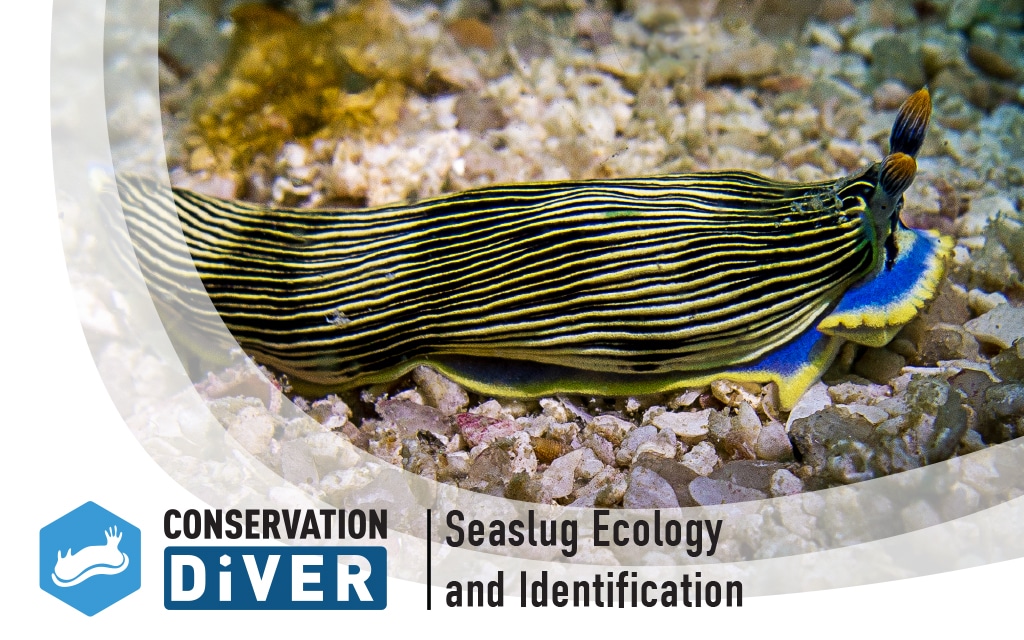
Training Centers
- Hawai'i - Ocean Alliance Project
- Indonesia – Blue Marlin Conservation
- Madagascar - MRCI
- Thailand – ATMEC
- Thailand – Black Turtle Conservation
- Thailand – NHRCP
Published papers and studies based on this course
Scientific papers
- A new species of coral-feeding nudibranch (Mollusca: Gastropoda) from the Gulf of Thailand. by Rahul Mehrotra, Spencer Arnold, Adam Wang, Suchana Chavanich, Bert W. Hoeksema & Manuel Caballer
- Selective consumption of sacoglossan sea slugs (Mollusca: Gastropoda) by scleractinian corals (Cnidaria: Anthozoa) by Rahul Mehrotra, Coline Monchanin, Chad M. Scott, Niphon Phongsuwan, Manuel Caballer Gutierrez, Suchana Chavanich, Bert W. Hoeksema
- The extraordinary genus Myja is not a tergipedid, but related to the Facelinidae s. str. with the addition of two new species from Japan (Mollusca, Nudibranchia) by Alexander Martynov, Rahul Mehrotra, Suchana Chavanich, Rie Nakano, Sho Kashio, Kennet Lundin, Bernard Picton and Tatiana Korshunova
- The formerly enigmatic Unidentiidae in the limelight again: a new species of the genus Unidentia from Thailand (Gastropoda: Nudibranchia) by Tatiana Korshunova, Rahul Mehrotra, Spencer Arnold, Kennet Lundin, Bernard Picton and Alexander Martynov
- On the genus Armina (Gastropoda: Heterobranchia: Nudibranchia) in Thailand by Rahul Mehrotra, Manuel Caballer Gutierrez and Suchana Chavanich
- Species inventory of sea slugs (Gastropoda: Heterobranchia) for Koh Tao, Thailand, with 25 first records for Thai waters by Rahul Mehrotra and Chad M. Scott
- Predation on a sacoglossan gastropod by a mushroom coral by Rahul Mehrotra, Chad M. Scott, Joel M. Rohrer and Bert W. Hoeksema
Articles
- A new species of coral-eating nudibranch
- Corals Have Evolved to Eat Sea Slugs
- The Koh Tao Team Makes a New Nudibranch Discovery
- A New species of Sea Slug – Found on Koh Tao
Related Resources
Shark Ecology & Population Studies
Shark Ecology & Population Studies

Sharks are one of the top predators of almost all marine environments; they have played a major role in driving the evolution of many of the other fishes and marine life. But today shark species around the globe are heavily threatened due to over-fishing. In this course you will learn more about the shark species of the world, as well as get the skills and practice monitoring shark populations and contributing to national and internal databases.


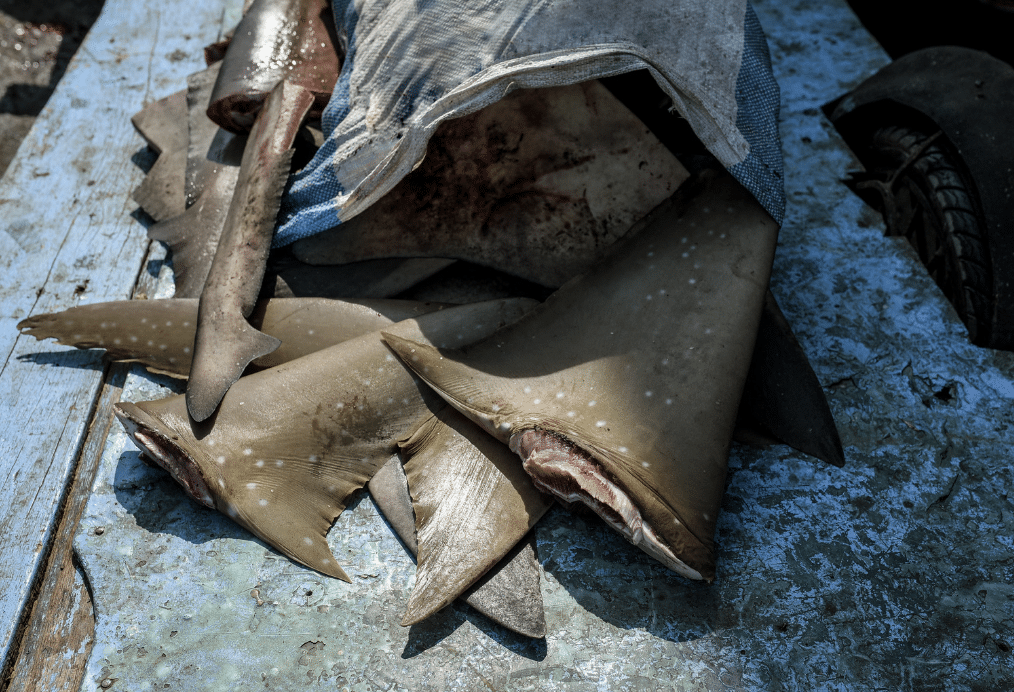
Prerequisites
- Be 12 years of age or older
- Be a competent swimmer if performing the course snorkelling
- Be certified as an Advanced diver under a leading diving organization (PADI, SSI, RAID, etc) or an Open Water diver who has satisfactorily completed a buoyancy appraisal with a professional diver
- Demonstrate proper diving ability at an advanced Level and be proficient in buoyancy and self-awareness
Standards
- Understand the importance of sharks in the marine ecosystem, global and local threats to shark populations, and shark identification.
- Learn how to survey for sharks and the various methods available to estimate abundance and diversity.
- Practice surveying for sharks while snorkeling or diving and record data on the sharks observed
- Know how to enter data into the Conservation Diver database and also partners such as SharkTrust.org and the eShark Project.
Requirements
- Attend 1 lecture on Shark Ecology and Population Studies
- Perform a dive OR snorkel to observe sharks
- Record data on shark observations
- Enter data into Conservation Diver and partner databases
Expected course time about 5 hours.
Certification Card

Training Centers
- Hawai'i - Ocean Alliance Project
- Indonesia – Blue Marlin Conservation
- Thailand – Black Turtle Conservation
- Thailand – NHRCP
Citizen Science Collaborators


Ecological Monitoring Program
Ecological Monitoring Program

The Ecological Monitoring program is designed to give students an introduction to coral reef ecology and how to view the reef scientifically by assessing key biotic and abiotic reef components. The course teaches students how to use real world scientific sampling and reef survey techniques and certifies them to conduct their own surveys and report data back to the online database. Parameters assessed include fish and invertebrate abundance and biodiversity, substrate cover, coral taxonomy, coral diseases, coral bleaching, and more. This course is a prerequisite for many of the other courses offered by Conservation Diver
Prerequisites
- Be 12 years of age or older
- Be certified as an Advanced diver under a leading diving organization (PADI, SSI, RAID, etc) or an Open Water diver who has satisfactorily completed a buoyancy appraisal with a professional diver
- Demonstrate proper diving ability at an advanced Level and be proficient in buoyancy and self-awareness
Standards
- Understand more about coral reef ecology and threats to coral reefs
- Understand various survey techniques used by reef managers to monitor coral reef ecosystems
- Learn the techniques and diagnostic features for identifying coral reef invertebrates along a permanent transect line
- Learn the techniques and diagnostic features for identifying coral reef fishes and other vertebrates along a permanent transect line
- Learn how to assess substrate types and hard coral coverage/growth forms using the point-intercept technique
- Learn how to assess coral health and bleaching
- Perform EMP surveys in several different areas and input the data into the database
- Complete all 3 course exams
Requirements
- Attend all knowledge development presentations
- Complete the e-Learning or read and complete chapter reviews for chapters 1-8 in the EMP manual
- Enter records into database
- Perform all three surveys (invert., fish, and substrate) at least once
- Perform a ‘full EMP’ at least once
- Enter data onto data sheets or into the online database
Expected course time about 20 hours, minimum of 4 dives
Certification Card
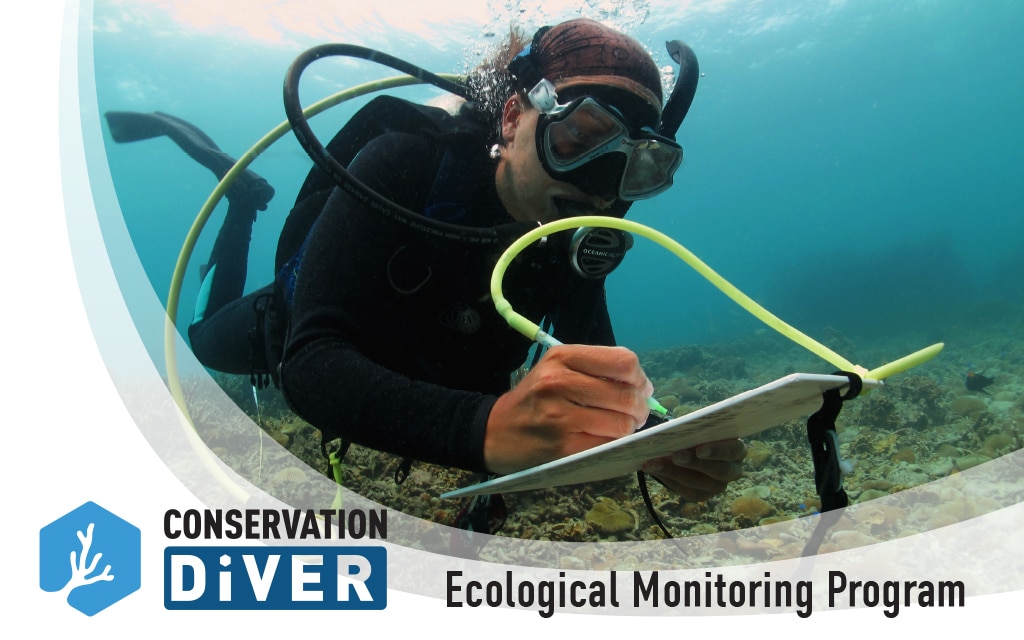
Training Centers
- Hawai'i - Ocean Alliance Project
- Indonesia - Blue Marlin Conservation
- Madagascar - MRCI
- Mallorca - Albatros Diving
- Thailand - ATMEC
- Thailand - Black Turtle Conservation
- Thailand - NHRCP
Related Resources
Note: This course has an accompanying textbook what come in a printed and electronic version available for purchase - Ecological Monitoring Program Manual
Published Papers and reports related to this course
- Population dynamics of corallivores (Drupella and Acanthaster) on coral reefs of Koh Tao, a diving destination in the Gulf of Thailand by Chad M. Scott, Rahul Mehrotra, Margaux Y. Hein, Michelangelo S. Moerland, and Bert W. Hoeksema
- Rare zooxanthellate Nanipora octocoral (Helioporacea) in the Gulf of Thailand by Pau Urgell Plaza, Rahul Mehrotra, Chad M. Scott and James Davis Reimer
- Changes in hard coral abundance and composition on Koh Tao, Thailand, 2006-2014 by Chad M. Scott, Rahul Mehrotra, Madalena Cabral and Sirachai Arunrugstichai
- An update to the list of coral reef fishes from Koh Tao, Gulf of Thailand by Patrick Scaps and Chad M. Scott
Giant Clam Nurseries and Population Studies
Giant Clam Nurseries and Population Studies
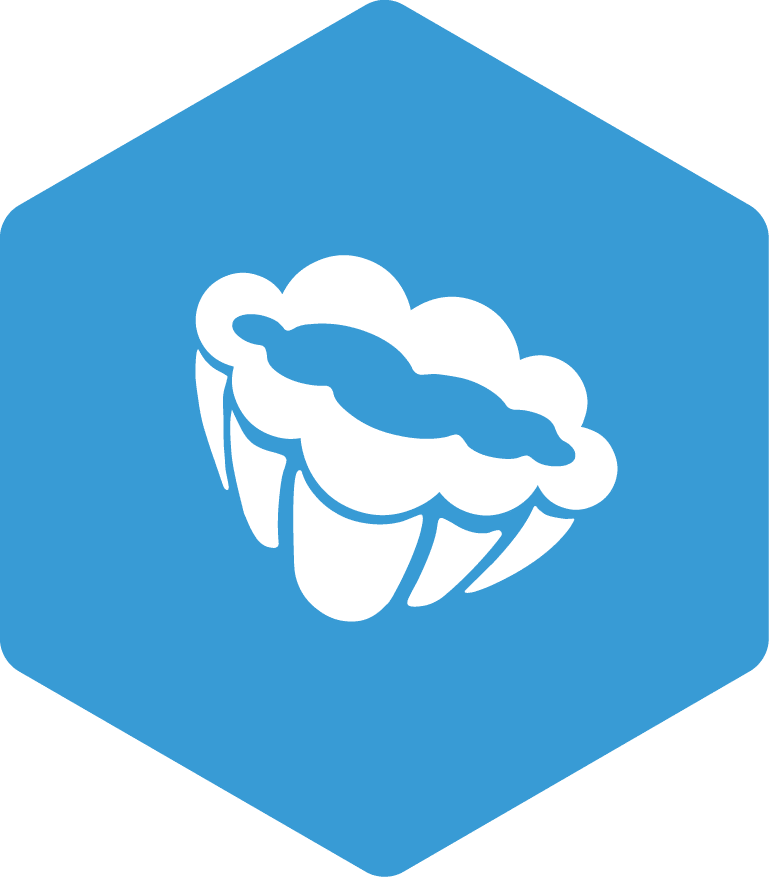
Giant Clams are important regulators of the oligotrophic conditions that coral reefs need the thrive. They are
able to filter on average 1000 litres of water per day which controls the water quality and nutrient levels in the ecosystem. This reduction in nutrients by filter feeders allow corals to thrive.
During this course students will be introduce to different
survey techniques to monitor giant clams and be taught the
key processes to evaluate and recognise different species.
We will also demonstrate the steps required to manage giant
clam nurseries and the on-going maintenance and data
collection to be done following transplanting.



Prerequisites
- Be 12 years of age or older
- Be certified as an Advanced diver under a leading diving organization (PADI, SSI, RAID, etc) or an Open Water diver who has satisfactorily completed a buoyancy appraisal with a professional diver
- Demonstrate proper diving ability at an advanced Level and be proficient in buoyancy and self-awareness.
- Be certified in our Ecological Monitoring Program
Standards
- Understand the importance, ecology, and threats to giant clam populations locally and around the globe
- Be able to identify anatomical features of giant clams in order to perform species recognition
- Learn techniques to survey and monitor local giant clam populations
- Learn techniques involving the use and maintenance of in-sea giant clam nurseries
Requirements
- Attend 1 Giant Clam Lecture
- Perform 1 survey dive specifically taking data on Giant Clam Abundance/Density, Diversity, and size distribution
- Take data on giant clam growth and mortality at the in-sea nurseries
- Perform general maintenance duties during 1 dive at the giant clam nurseries
- Complete the final quiz
- Enter data into Conservation Diver database
Expected course time about 8 hours
Certification Card
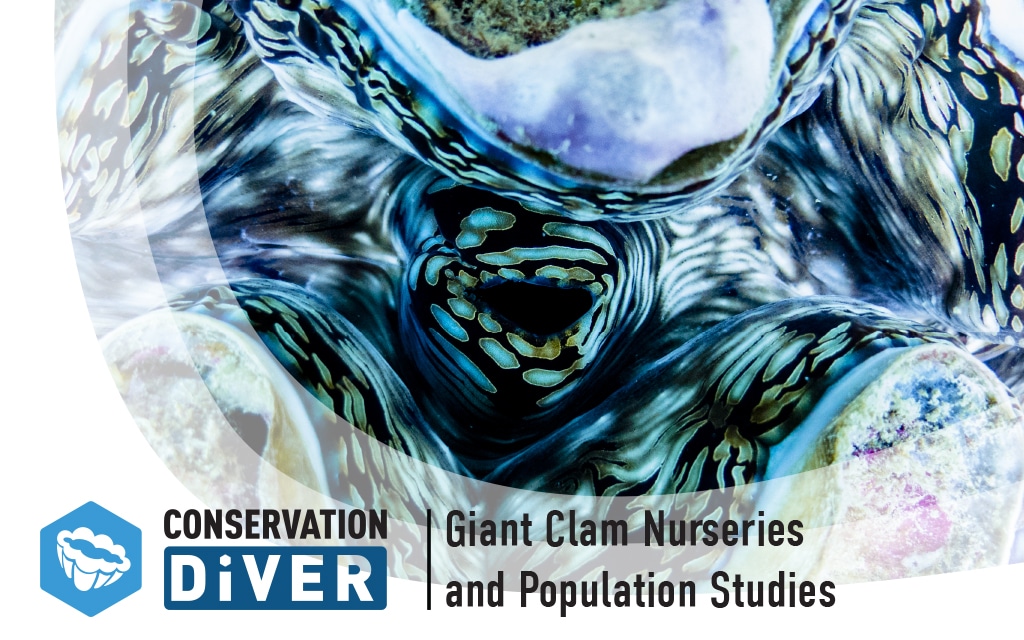
Training Centers
- Indonesia – Blue Marlin Conservation
- Thailand – ATMEC
- Thailand – Black Turtle Conservation
- Thailand – NHRCP
Seahorse Ecology and Monitoring
Seahorse Ecology and Monitoring

The Seahorse ecology and monitoring course aims bridge the information gap in the scientific community on classification, population dynamics and conservation status of Syngnathiformes. This lack of information is one of the limiting factors in creating effective conservation strategies to protect these vulnerable species. To successfully create adequate
conservation plans for seahorses, we need to understand their
life history traits and ecology. This course will equip you with the skills to identify seahorse species using anatomical features and behavioural ecology traits.



Prerequisites
- Be 12 years of age or older
- Be certified as an Advanced diver under a leading diving organization (PADI, SSI, RAID, etc) or an Open Water diver who has satisfactorily completed a buoyancy appraisal with a professional diver
- Demonstrate proper diving ability at an advanced Level and be proficient in buoyancy and self-awareness.
Standards
- Learn about seahorse ecology and identification and understand the global and local threats to seahorse populations
- Learn the diagnostic features for identifying seahorses and be able to identify the most common local species of seahorses
- Know how to survey for seahorses using the roving diver and transect survey methods
- Practice a seahorse survey completing at least two of the main tasks (surveying along the line, controlling the GPS raft, keeping track of dive activity timing)
- Be familiar with the iSeahorse.org website and how to enter sightings data into the global database
Requirements
- Attend 1 seahorse lecture
- Attend 1 seahorse dive briefing
- Complete ID quiz using dichotomous key and seahorse photos
- Complete 1 seahorse survey dives (in 2 different roles)
- Enter GPS data into Google Earth
- Enter sightings and data into the iSeahorse.org and other relevant databases (if seahorse was observed)
Expected course time about 4 hours
Certification Card

Training Centers
- Indonesia – Blue Marlin Conservation
- Madagascar - MRCI
- Thailand – ATMEC
- Thailand – Black Turtle Conservation
- Thailand – NHRCP
Citizen Science Collaborators


